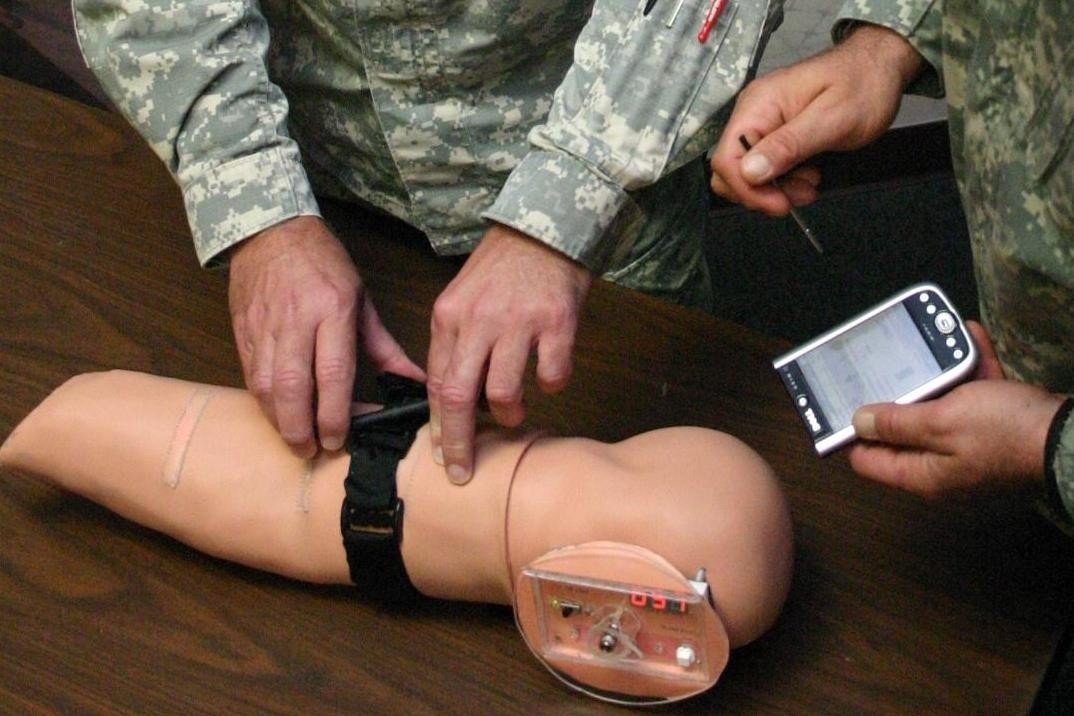WASHINGTON, D.C. - The U.S. Army Simulation and Training Technology Center participated with members of the Program Executive Office for Simulation, Training and Instrumentation in the annual PEO STRI Capitol Hill Demonstration in Washington, D.C., in early February.
The goal of the annual trip was to educate members of Congress and their staffs on the Army's research, development, training, simulation and testing capabilities. Visitors have the unique opportunity to touch, feel and try-out both fielded Army systems as well as projects under research and development.
Bleeding from extremity wounds is the number one cause of preventable death on the battlefield, which is why the STTC chose to demonstrate a prototype tourniquet trainer that will revolutionize current techniques used by combat medics and Soldiers.
The HapMed mannequin arm provides stand-alone, hands-on skills training in which trainees can experience the actual torque required to staunch bleeding from an extremity wound and be timed on tourniquet application. Sensors within the arm gauge the amount of pressure being applied, and as the tourniquet is tightened, LED lights on the arm indicate to the trainee that the bleeding is being slowed by the tourniquet.
When the trainee has tightened the tourniquet enough, per amount of torque needed on an actual human, the lights indicate to him that he has successfully stopped the bleeding. If the tourniquet is loosened (as can happen during transport), the "bleeding" will begin again.
Currently, tourniquet training lacks the much needed realism as application is often simulated using a block of wood as a limb. The HapMed tourniquet provides critical training realism to fill that training gap.
The HapMed arm can be augmented with the use of a handheld personal digital assistant, better known as a PDA. The HapMed PDA provides a portable and intuitive interface to specify training scenario parameters such as wound location, casualty size, and whether the wound will require more than one tourniquet---these are all distinctions a Soldier needs to know when applying a tourniquet in combat. The PDA also provides performance feedback to trainees on timing, whether the tourniquet is in the correct location, casualty status and the amount of torque being applied. The PDA can be used by an instructor to control one or several mannequin arms either in the classroom or in the field for training.
Additionally, research is currently being conducted to add game-based training to HapMed. The game will provide trainees the opportunity to practice battlefield decision making and acquire the knowledge foundation that underlies effective action. Because the mannequin arm is completely wireless and has the ability to transmit data using Bluetooth technology, interactions with the arm will translate in real-time on the game, adding a new level to training.
HapMed is being developed for the U.S. Army Medical Department Center and School at Fort Sam Houston in San Antonio in partnership with STTC as part of a Small Business Innovative Research Project. A prototype of the HapMed game-based training is expected in early 2008. The HapMed research and development is being led by the STTC, along with the University of Central Florida's Institute for Simulation and Training and CHI Systems Inc.


Social Sharing